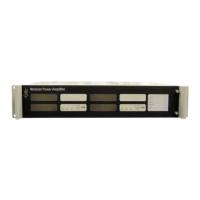iPAM400 – Product Manual
U-0629-0171.doc – Issue: 04 complete, approved
Page 88 of 138
Menu To
8. Reboot
Perform a soft reboot.
X. Exit
Exit the Setup tool.
Notes:
1) This menu item will only appear when the IP allocation has been set to ‘static’.
2) This menu item will only be shown once any part of the current IP configuration has been changed.
3) ALSA (Advanced Linux Sound Architecture) settings are pre-configured and they do not normally require user
adjustments. Refer to ASL for ALSA setup instructions, if required.
4) The amplifier mainframe will be cleared completely and the iPAM400 will stop working. A manual configuration
will be required. Refer to ASL for instructions.
6.4 Audio Settings
For commissioning and test purposes the iPAM400 audio input and output gain and surveillance settings
can temporarily be adjusted using the vipa_audio_set command line. This command can therefore be
used to find the right audio settings for the system.
!
!
All settings carried out using the vipa_audio_set command line are temporary. In order to
make these settings permanent it is necessary to update the configuration file with these
values using the VIPA Config Tool, and then download the new configuration into the iPAM400,
as described in Section “6.3.1.3 Updating or Restoring the iPAM400 System Configuration”
(page 69).
To Modify the Audio Settings:
1. Connect to the iPAM400 either remotely or locally, as described in Section “6.2 Connecting to the
iPAM400” (page 59).
2. Select the unit that the vipa_audio_set command will control.
a. To modify the audio settings on the iPAM400 unit to which you are connected, enter the
following commands:
source /etc/sysconfig/vipet
export JCOPSERVER
b. To modify the audio settings on a unit other than the one to which you are connected, enter the
following command:
export JCOPSERVER=<hostname>
Where:
< hostname>
hostname of the unit to be adjusted

